Unlocking the key to stabilized stannous fluoride toothpaste
How Colgate-Palmolive developed a toothpaste technology to help achieve whole mouth health.
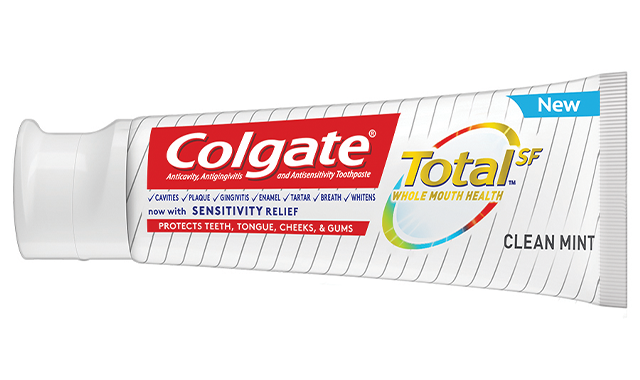
Daily control of oral biofilm is regarded as the single most important factor for achieving and maintaining oral health. However, despite this knowledge, people struggle to achieve adequate biofilm control on a regular basis. Poor oral biofilm control is likely to, at least partially, explain why caries and periodontal disease are two of the most common chronic diseases globally.1
In general, when people consider their oral hygiene rituals, the focus is on cleaning their teeth. However, teeth only make up 20 percent of the surface area of the oral cavity. The other 80 percent consists of the tongue, buccal mucosa and gingivae.2 These soft tissue surfaces can harbor bacteria, which act as a reservoir to recolonize the teeth after brushing. Additionally, the saliva itself not only harbors a noninsignificant bacteria load but can also act as a vehicle to facilitate the recolonization of bacteria throughout the oral cavity.
To help people achieve a higher standard of oral health, the concept of “whole mouth health” has been developed to encourage management of biofilm on all oral surfaces.
Stannous fluoride benefits
Stannous fluoride (SnF2) has been used in toothpaste for several decades because it’s active in preventing dental caries. In addition, SnF2 can provide antibacterial activity, leading to reduced plaque formation and reduced incidence of gingivitis. It can also occlude open dentin tubules, reducing dentin hypersensitivity.
However, traditional toothpastes containing SnF2 have also been well known for their poor taste as well as their propensity to stain caused by oxidation of the tin from a 2+ state to 4+ state. The oxidation of the tin also leads to a decrease in the clinical performance of the toothpaste.
Related reading: Is periodontal disease linked to Alzheimer's?
Traditionally, scientists have endeavored to increase the stability of SnF2 in toothpaste formulations by reducing water content in the formulation, adding additional stannous salts such as stannous chloride (SnCl2) to act as a sacrificial source of stannous ions or by adding stabilizing agents.
All of these approaches bring limitations to the formulation. Low water formulations typically have poor esthetics, foaming, taste and texture, making them less likely to be used regularly. The addition of sacrificial sources of stannous such as SnCl2 further leads to increased risk of staining and poor taste.
Breaking through

Colgate-Palmolive has developed a breakthrough with respect to SnF2 toothpaste formulations to effectively solve the SnF2 problems. The addition of zinc phosphate stabilizes the SnF2 in the 2+ active state. This allows a high water formulation to be developed and precludes the need for sacrificial sources of stannous.
The resulting new toothpaste (Colgate TotalSF) provides a positive consumer experience, which is critical for compliance.
To evidence the superior availability of active tin, X-ray absorption spectroscopy (XAS) was used to determine the oxidative states of tin in the new Colgate TotalSF and other commercially available stannous fluoride-containing toothpastes (Table 1). The data from XAS demonstrated that the new Colgate TotalSF, stabilized with zinc phosphate, had significantly greater proportions on active Sn 2+ than the other toothpastes measured.3
Validating success
To demonstrate that Colgate TotalSF has implications for whole mouth health, an eight-week clinical study was undertaken. The antimicrobial effects of Colgate TotalSF versus a control toothpaste were measured by taking samples from the plaque, saliva, buccal mucosa, gingivae and tongue. Colgate TotalSF provided reductions in bacteria in all oral micro-environments, which increased over time. After eight weeks of regular use, Colgate TotalSF showed reductions in bacteria ranging from 33 percent to 61 percent compared with the control toothpaste.4
To be assured that the reductions in bacteria identified by Haraszthy et al.,4 translated into long-term reductions in plaque and gingivitis, two six-month clinical studies were conducted.
Continued on page two....
In the first study, Colgate TotalSF was compared to a nonantibacterial fluoride toothpaste control. After six months of regular use, subjects in the Colgate TotalSF group showed statistically significant reductions in gingival inflammation and biofilm control compared with nonantibacterial fluoride toothpaste5 (Fig. 1).
Fig. 1
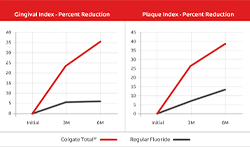
In the second randomized controlled clinical trial, Colgate TotalSF was compared to nonantibacterial fluoride toothpaste and Crest Pro-Health. Both Colgate TotalSF and Crest Pro-Health demonstrated improvements in plaque control and reductions in gingivitis compared to nonantibacterial toothpaste.
Results for Colgate TotalSF were directionally, but not significantly, better than Crest Pro-Health, demonstrating that stabilization with zinc phosphate is at least as effective as traditional methods.6
Stopping staining
Staining is a well-known by-product of poorly stabilized stannous fluoride toothpaste and of significant concern to both dental professionals and patients. For dental professionals, staining leads to longer chair time and less satisfied patients. Patients are less likely to comply with a homecare regimen when there are negative side effects such as tooth staining.
In a six-week stain removal clinical study, participants using Colgate TotalSF demonstrated statistically significant reductions in extrinsic stain of 17.5 percent at three weeks and 27.8 percent at six weeks, compared to regular fluoride toothpaste.7 Rather than cause staining, Colgate TotalSF reduces staining when used regularly over a six-week period.
Related reading: The clinical procedure that can make or break your career
Stannous fluoride is a unique active ingredient. In addition to caries protection and antibacterial activity, it also provides protection against dentin hypersensitivity by occluding dentin tubules. The results of a randomized clinical trial showed Colgate TotalSF provided a statistically significant reduction in dentin hypersensitivity over a period of eight weeks, compared to regular fluoride toothpaste8 (Fig. 2).
Fig 2.
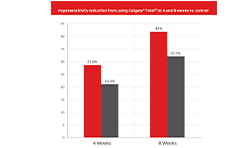
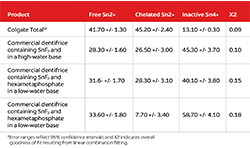
Chart 1Fig 2.
Positive results
Colgate TotalSF is an innovative toothpaste to help people achieve whole mouth health. The formulation took more than a decade to develop due to the novel approach of stabilizing stannous fluoride with zinc phosphate. The formulation has more than 40 patents and 86 pending patents as well as a comprehensive clinical support dossier.
The resulting toothpaste, Colgate TotalSF, provides people with a pleasant user experience, reductions in bacteria on 100 percent of mouth surfaces, and protection against caries, plaque, gingivitis, calculus, stains, malodor and dentin hypersensitivity.
References
1. Kassebaum et al. Global, Regional, and National Prevalence, Incidence, and Disability-Adjusted Life Years for Oral Conditions for 195 Countries, 1990–2015: A Systematic Analysis for the Global Burden of Diseases, Injuries, and Risk Factors. Journal of Dental Research 2017, Vol. 96(4) 380–387.
2. Collins and Dawes. The surface area of the adult human mouth and thickness of the salivary film covering the teeth and oral mucosa. J Dent Res (1987) 66:1300-1302.
3. Myers, Carl P. et al. Solving the problem with stannous fluoride. The Journal of the American Dental Association , Volume 150 , Issue 4S , S5 - S13.
4. Haraszthy, Violet I. et al. Antimicrobial effects of a stannous fluoride toothpaste in distinct oral microenvironments. The Journal of the American Dental Association , Volume 150 , Issue 4S , S14 - S24.
5. Hu, Deyu et al. Evaluation of a stabilized stannous fluoride dentifrice on dental plaque and gingivitis in a randomized controlled trial with 6-month follow-up. The Journal of the American Dental Association , Volume 150 , Issue 4S , S32 - S37.
6. Seriwatanachai, Dutmanee et al. Effect of stannous fluoride and zinc phosphate dentifrice on dental plaque and gingivitis. The Journal of the American Dental Association , Volume 150 , Issue 4S , S25 - S31.
7. Li, Yiming et al. Solving the problem with stannous fluoride. The Journal of the American Dental Association , Volume 150 , Issue 4S , S38 - S46
8. Hines, Deon et al. Effect of a stannous fluoride toothpaste on dentinal hypersensitivity. The Journal of the American Dental Association , Volume 150 , Issue 4S , S47 - S59.
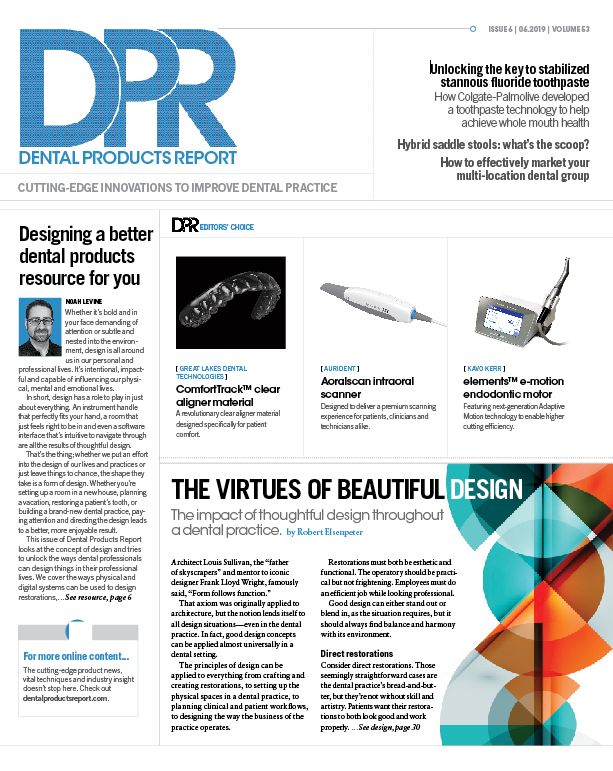
ACTIVA BioACTIVE Bulk Flow Marks Pulpdent’s First Major Product Release in 4 Years
December 12th 2024Next-generation bulk-fill dental restorative raises the standard of care for bulk-fill procedures by providing natural remineralization support, while also overcoming current bulk-fill limitations.